What did domestic cats do before the internet? LOLCats to I Can Has Cheezburger?, dogs—traditionally our favoured house pet—never found the same fame online as their feline foes. A 2010 research found that some 42% of Americans identified as ‘dog people’, whilst just 12% admitting to being ‘cat people’. The internet, though, is definitely a ‘cat thing’. The low culture phenomenon of ‘cute cat pics’ has dominated the web since its infancy, and the two look destined to be forever entwined.
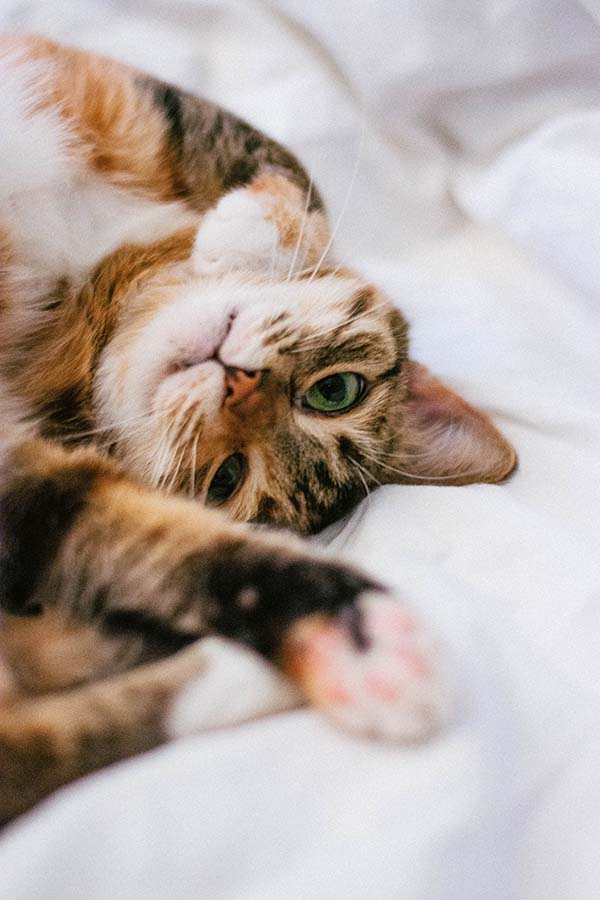
And that online ubiquity looks to have had implications at home, with Britain’s cat population—at eight million—its highest in five years. A 2018 report revealed that 18% of households now own a cat, equating to 140,000 more cats and 75,000 more households. Which means 75,000 more hairy beds. Because as Cats Sleep Anywhere, the famous poem by revered children’s author Eleanor Farjeon (1881—1965) goes:
Cats sleep anywhere, any table, any chair.
Top of piano, window-ledge, in the middle, on the edge.
Open drawer, empty shoe, anybody’s lap will do.
Fitted in a cardboard box, in the cupboard with your frocks.
Anywhere! They don’t care! Cats sleep anywhere.
Whilst cats do rank among the sleepiest of animals—natural predators require more sleep to fuel their extraordinary energy—one of the reasons why we humans believe our feline friends to sleep so much is that our sleep patters are not aligned. Cats sleep between 12 and 16 hours a day, but they’re naturally nocturnal, which means most of those cat naps are taken during our awake hours. Open drawer, empty shoe, anybody’s lap that will do … you’ll likely find this less so if you switched to 4am Netflix sessions, when little kitty might be out hunting for a mouse to deliver home for you in a half-alive state.
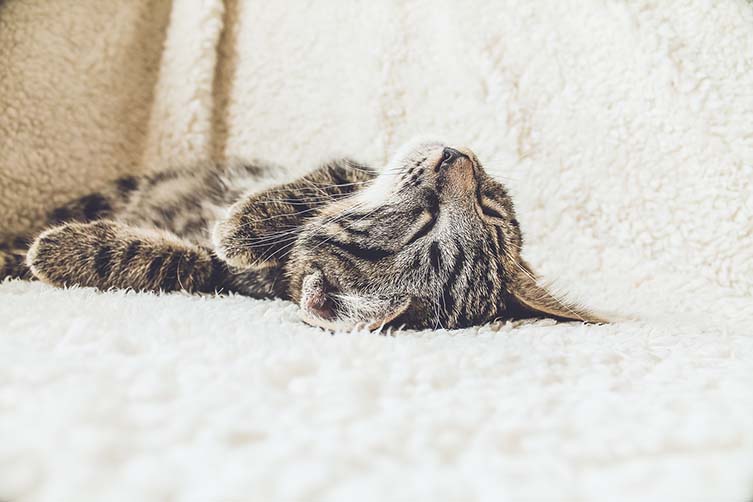
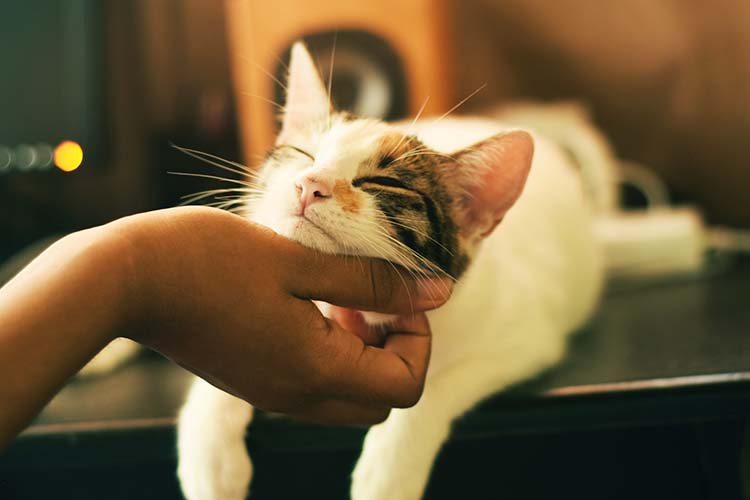
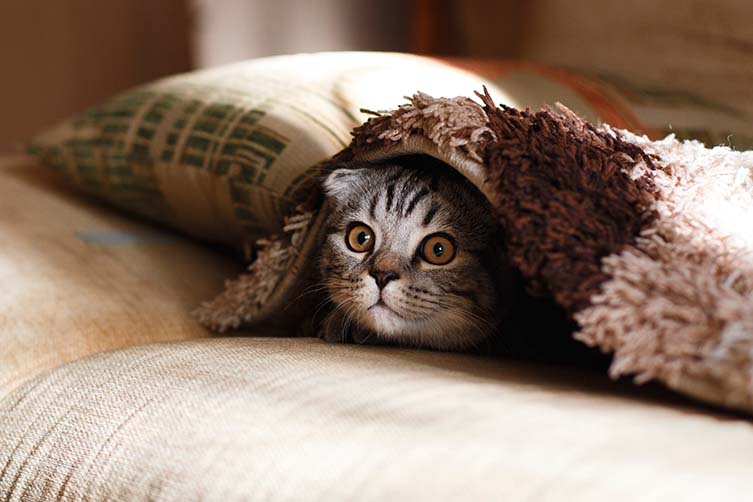
Just because house cats have been domesticated, it doesn’t mean they don’t have the impulses of their wild ancestors. The good news is, though, that they can adapt; especially important news in the case of light sleepers. Cat paws pattering across the floorboards, pouncing and scratching, meowing through the night? Your cat’s notorious curling up on your fancy bed with its cosy foam mattress, its dreaming hours away on your favourite rug, might look cute, but getting cats onto a similar sleeping pattern as yourself is something that can help both of you get more from your lives.
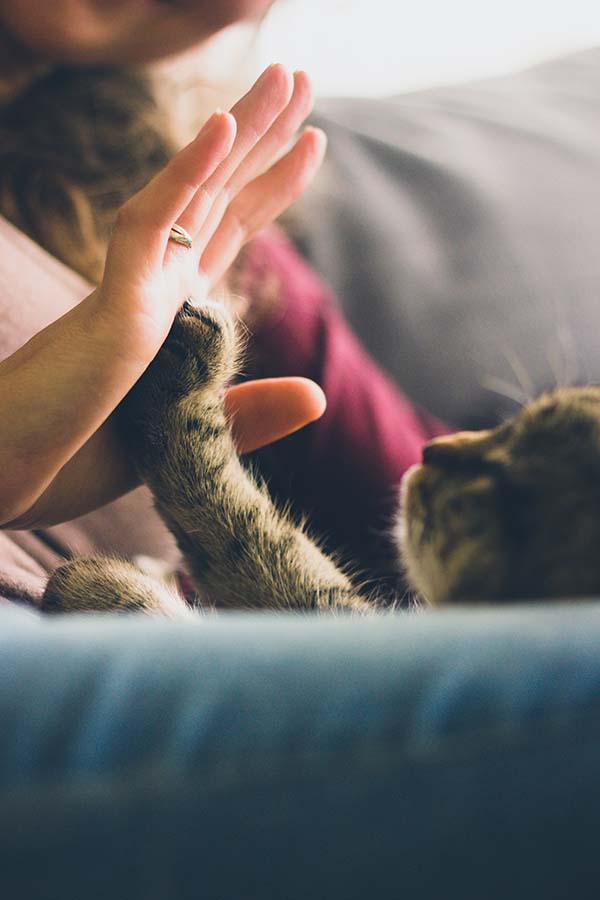
Firstly, it’s important to understand how cats sleep. Do cats experience the same sleep stages that humans do? Sure, cats do move from slow-wave sleep to REM sleep like humans and other mammals, but the time that they spend in each of those stages—as well as a full sleep cycle—is actually much shorter.
Measuring their patterns of brain activity with an electroencephalograph (EEG) that records waves or pulses of activity on a graph, studies have shown that when awake, their brains produce tightly bunched irregular peaks. When dozing, those waves take the form of long and irregular waves: slow-wave sleep. Cats will stay in this state for around 15 to 30 minutes; their noses and ears remaining on alert, ready to hunt or protect themselves at the drop of a hat. They can even sleep sitting up—their muscles stiffening to hold them upright—allowing them to quickly spring into action.
Moving from light to deep sleep, kitty will typically stretch out and roll to one side. Brain patterns shift, moving closer together, more similar to waking patterns. This faze, REM sleep, will typically only last around six minutes, with humans spending between 90 and 120 minutes locked into REM sleep each night. Twitching whiskers and eyelids are a telltale sign that your furry friend will be dreaming about sardines.
So how can you ensure that the petite predator doesn’t spring into action just as you’ve settled into your stylish bed frame with headboard? It’s important to try and shift playtime to daytime. Think about occupying its mind in the evening, before your own bedtime, and—if you see your cat sleeping during the day—consider waking it up and encouraging a little activity. Similarly, allow them to get out into the big wide open during the day, but ignore their advances of a nighttime; giving them toys specifically-designed for night time play (think a glow in the dark ball) to keep them trying to stir you into action.
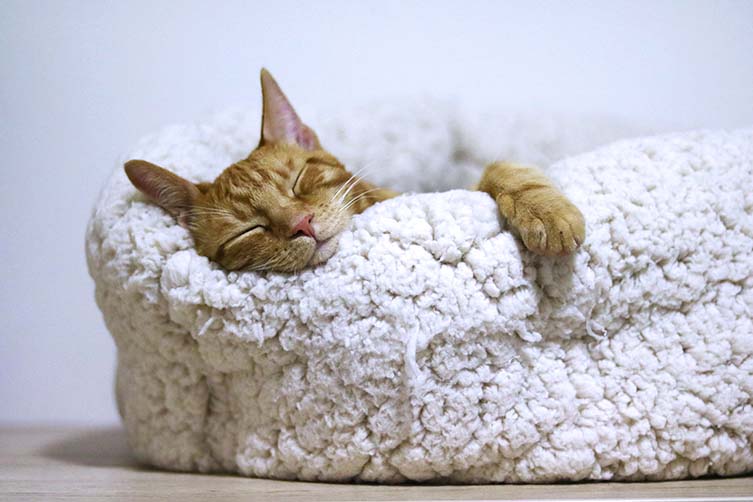
You might want to think about changing eating habits, too.Cats typically sleep well following a hearty meal, so consider a timed food bowl that can play to their hunter’s instincts, see review here. On that note, also give thought to changing their diet. Cheaper foods can lack the necessary nutrients to make them active, and a lethargic cat can quickly turn into a troublesome one, as they won’t have expended enough energy to put them into deep sleep.
Finally, one should set boundaries for your bedroom. Don’t play with your cats in the place you want to achieve rest, keep toys and potential toys (rolled up socks, for example) out of the bedroom; keep the door closed during the night and be mindful to ignore any initial meowing that may result from changing their routine; make your designated play area as far from the bedroom as you can, that way any specially-designed night toys won’t keep you away.
As with any shift in routine, it can take time. Be patient, but be firm. Your feline friend might be cuter than any a cute cat meme, but you need to stick to any changes you implement. Cats sleep anywhere, but you want to make sure you can too.








